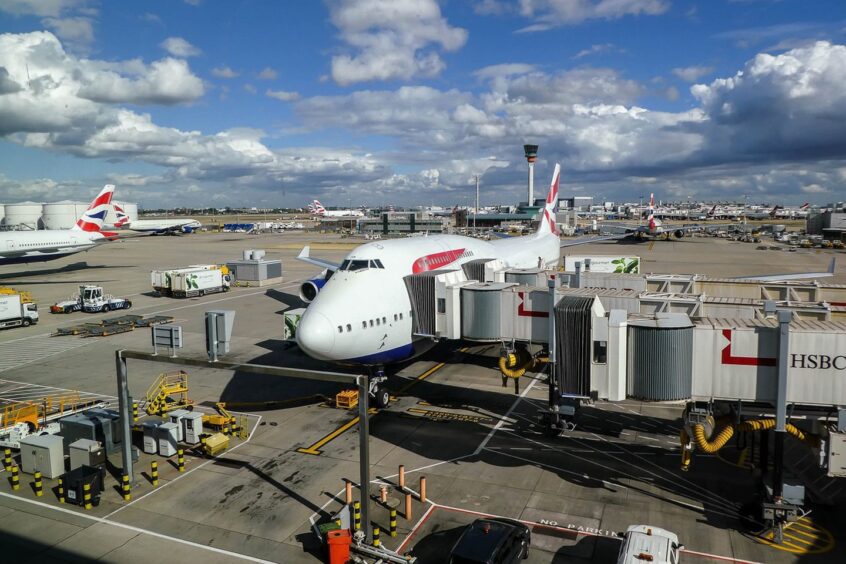
As aviation seeks pathways to decarbonise, sustainable aviation fuel (SAF) has emerged as a critical solution, offering a “drop-in” option that can be integrated with existing jet engines and fuel infrastructure.
Yet, despite the demand and its potential, scaling SAF production, especially beyond hydroprocessed esters and fatty acids (HEFA) technology, remains elusive.
The challenges lie in complex production processes, volatile feedstock markets, and limited investment interest, particularly for non-HEFA SAF pathways.
Why SAF?
The aviation industry contributes approximately 2% of global CO₂ emissions, which may seem modest, but the sector is growing rapidly.
Traditional aircraft design improvements are limited to around 20% efficiency gains, insufficient to offset the environmental impact of increased flight activity.
Alternative fuels like hydrogen and electric batteries, while promising for the future, face substantial limitations that make them unviable in the short term for large-scale aviation.
Hydrogen, despite its high energy content, presents storage challenges due to the need for high pressures and specialized infrastructure, while electric batteries are restricted by weight and limited energy density, suitable only for short-range, low-capacity flights.
Plus both of these options would require change to propulsion systems and fuel infrastructure.
Sustainable solutions like SAF present the most viable near-term alternative to traditional jet fuel, with the potential to reduce lifecycle emissions by up to 60% compared to conventional fuels.
HEFA’s dominance and its limitations
HEFA plants, which process used cooking oils and animal fats, currently produce 90-95% of the world’s SAF.
These plants transform feedstock in high-pressure, high-temperature hydrotreating units with hydrogen and catalysts, producing SAF suitable for blending with conventional kerosene.
While effective, this reliance on feedstocks such as cooking oils is problematic; supply is limited, and competition is fierce, driving up prices and reducing availability for new market entrants.
Adding to this challenge is the United States’ approach to subsidies.
Through a targeted tax credit, the US government incentivised the import of cooking oils from Europe and the UK, creating an economically advantageous pathway for US producers.
This subsidy regime allowed US companies to import used cooking oil, produce HEFA SAF domestically, and export it back to other regions, including the UK, at a competitive price.
While effective for US producers, this approach underscores a critical lesson for global SAF development – subsidy regimes have far-reaching market impacts and can limit feedstock availability in regions already competing for finite resources.
The barriers to new pathways
Although the HEFA process is well-established, it cannot alone meet the long-term demand for SAF, driving the need for alternative feedstocks like forestry residues, waste biomass, and municipal solid waste (MSW).
These alternatives are essential, but the complexity of converting them into SAF at scale presents significant barriers.
Feedstock availability and cost
While biomass and waste feedstocks are plentiful, they are challenging to collect and process.
Forestry waste, for instance, is bulky, costly to transport, and laden with water, which has no fuel value.
Although MSW offers a steady supply, and even presents an opportunity to solve the problem of waste disposal, it contains contaminants (e.g., heavy metals, chlorine) that must be removed to prevent catalyst poisoning in the fuel production process.
Pre-treatment is costly and labour-intensive, requiring specialised equipment to sift out contaminants while leaving a clean, viable feedstock.
The variability of MSW composition adds yet another layer of complexity.
Waste profiles fluctuate significantly based on country, regional affluence, and even seasonality – for instance, as we approach Thanksgiving and Christmas in certain parts of the world we will see an influx of food waste like turkey bones, which contain phosphorus, an element which is poison to catalysts.
This constantly shifting mix complicates plant design, as systems must be flexible enough to handle diverse feedstock compositions that change week by week.”
Production complexity and contaminant management
SAF production from waste materials involves intricate conversion processes like gasification and Fischer-Tropsch synthesis.
The gasification process, which heats waste material to produce a syngas mixture, is prone to contamination from tars and fine particles that disrupt downstream conversion processes.
Cleaning this syngas to the required purity levels is a major challenge.
Contaminants, including tar-like hydrocarbons, clog equipment, destroy catalysts, and reduce plant efficiency—risking millions in equipment and operational downtime.
Investment risks and certification hurdles
Unlike HEFA plants, gasification and other emerging SAF technologies lack extensive real-world track records.
Thus, no equipment manufacturer or engineering company can guarantee a new plant’s success.
The aviation industry’s stringent certification requirements also mean each new SAF pathway faces rigorous testing to ensure fuel reliability and safety.
This is vital in aviation, where fuel must perform consistently to avoid operational risks.
These combined challenges make banks and investors wary of committing capital to SAF plants outside HEFA.
Engineering companies like Kent, with deep expertise in gasification and Fischer-Tropsch processes, are frequently asked to guarantee these plants’ performance.
However, without a proven history, such assurances are almost impossible to provide.
The case for government investment and global collaboration
The United States’ approach to subsidising cooking oil imports for HEFA production offers a valuable insight for global SAF development – well-designed subsidies can make a significant impact on cost structure, feedstock flow, and production viability.
For other feedstocks into SAF to become a mainstream aviation fuel, policymakers worldwide must adopt a comprehensive view that balances domestic and international needs for feedstock, production, and fuel supply.
Given the critical need for SAF to decarbonise aviation and the scale of investment required, the next step lies with governments.
Many in the industry believe that governments should lead the way in funding these first plants.
A billion-dollar SAF plant represents a substantial investment, but the benefits of scaling SAF production—both environmentally and economically—are immense, affecting the entire aviation industry and supporting national climate goals.
China, for example, has demonstrated a strong willingness to take bold steps toward renewable energy leadership, positioning itself as a frontrunner in wind, solar, and biodiesel.
Whoever secures a first-mover advantage, also stands to gain valuable intellectual property and economic returns from global SAF demand.
Governments worldwide, especially in regions like the UK through initiatives such as the RISE coalition, have the opportunity to capitalise on this advantage by fostering a robust SAF industry domestically.
A call to action for global investment
Developing a diverse, scalable SAF industry is essential to decarbonising aviation. Governments and industry stakeholders must work together to de-risk investment and prioritise the infrastructure and innovation required to build SAF plants outside HEFA.
The future of SAF depends not just on one country or company but on a coordinated, global effort.
Through RISE, Kent and its partners are actively lobbying the UK government, underscoring the vast benefits of taking a leadership position in SAF innovation and setting a global standard.
By investing now, nations can help secure a sustainable aviation future, one that leverages diverse feedstocks, overcomes technical hurdles, and addresses the environmental impacts of air travel.
The first governments to embrace this vision will not only drive SAF development but also shape the future of sustainable aviation.
 © Image: Kent/Media Zoo
© Image: Kent/Media Zoo © PA
© PA © Amy Katz/ZUMA Press Wire/Shutter
© Amy Katz/ZUMA Press Wire/Shutter